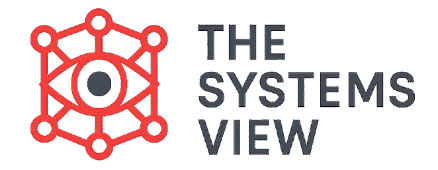We’ve talked about Personal Mastery (individual growth) and Mental Models (our hidden beliefs). Now, let’s explore the third discipline that helps organizations truly learn the Shared Vision.
Imagine a group of people building something together. If each person has a different idea of what they are building, they will probably fail. But if everyone clearly sees the same goal, the same finished picture, they can work powerfully together. This common picture of the future is what Peter Senge calls a Shared Vision.
A shared vision is much more than just a company motto or a statement printed on a wall. It’s a deep, common understanding and a real desire that everyone in the organization feels. It’s a goal that truly inspires people. When a group has a strong shared vision, they are not just following orders; they are truly committed to making that future happen. It gives everyone a sense of purpose and direction.
What is Shared Vision?
A shared vision is a picture of the future that people want to create together. It’s about:
- A Common Purpose: Everyone understands and agrees on what the organization is striving for.
- Genuine Commitment: People don’t just agree to the vision; they genuinely want to work towards it. They feel a personal connection to it.
- Inspiration and Energy: A true shared vision excites people and gives them energy, making them eager to work hard to achieve it.
- Focus for Learning: It helps the organization decide what it needs to learn and improve to reach its goals.
It’s the difference between being forced to row a boat versus genuinely wanting to row towards a beautiful island you all dream of reaching.
Why is Shared Vision Important?
A strong shared vision is incredibly important for any group that wants to learn and succeed:
- It provides Direction: Like a compass, it guides everyone’s actions and decisions, ensuring they are all moving in the same direction.
- It builds Commitment: When people truly believe in a vision, they are much more dedicated and willing to work through challenges. This creates a strong bond within the group.
- It fosters Innovation: A clear vision encourages people to find new and better ways to achieve their goals. It opens minds to creative solutions.
- It empowers Action: People feel more confident taking initiative when they know their actions fit into a larger, agreed-upon goal.
- It helps overcome Obstacles: When tough times come, a shared vision helps people stay focused and united, reminding them why they are doing what they do.
How to Build a Shared Vision
Building a shared vision is a powerful process that takes time and real effort. It’s not something leaders simply declare; it’s something that is truly built together.
Encouraging Personal Visions
A shared vision starts with individual people. Each person needs to think about their own hopes and dreams for the organization. They need to feel that their personal goals and values can be a part of the bigger picture. When many personal visions are shared, a powerful collective vision can emerge.
Dialogue and Collective Dreaming
Building a shared vision isn’t about giving orders. It’s about deep, honest conversations. People need to listen to each other, share their ideas, and dream together about what the future could look like. This open talk helps combine many individual ideas into one strong, common vision. It’s like putting together pieces of a puzzle to see the whole picture.
Anchoring in Values
A strong shared vision often connects to the group’s basic values and beliefs. What does the organization truly stand for? What are its core principles? When the vision is built on these shared values, it becomes even stronger and more meaningful for everyone.
Important: A true shared vision creates “pull.” Instead of being pushed by fear or rules, people are pulled forward by a deep desire to achieve the vision, creating energy and excitement.
Commitment, Not Compliance
This is a key difference. Compliance means people just follow rules because they have to. Commitment means people choose to follow the vision because they believe in it. A learning organization wants true commitment. People are not just “on board”; they are truly dedicated and active in making the vision real.
Ongoing Process
A shared vision is not set in stone forever. As the organization learns and the world changes, the vision might need to be refreshed or updated. It’s a living guide that evolves over time through continued discussion and learning.
Shared Vision and Systems Thinking
A shared vision works hand-in-hand with Systems Thinking.
- It gives a clear target for systemic improvements. When you understand how all the parts of your organization are connected (Systems Thinking), the shared vision helps you know what kind of changes to make.
- It helps align efforts across the interconnected parts of the system. Everyone knows where the “whole” is going.
- It makes sure that any changes or solutions developed through systems thinking are aimed at reaching the desired future, preventing disconnected actions.
Shared Vision in the Learning Organization
The discipline of Shared Vision powers the other disciplines:
- It inspires Personal Mastery by giving individuals a larger purpose to connect their own growth to.
- It helps to align Mental Models by giving people a common goal to work towards, which encourages them to question old assumptions that don’t fit the vision.
- It provides focus and meaning for Team Learning, as teams work together to solve problems and learn new skills to achieve the shared dream.
Conclusion
Shared Vision is a powerful force that unites and inspires a learning organization. It moves a group from simply following orders to being deeply committed to a common, exciting future. By carefully building a vision that truly belongs to everyone, organizations can unlock huge amounts of energy, alignment, and creativity. This shared purpose is what helps them not just survive, but truly thrive and build the future they collectively desire.



